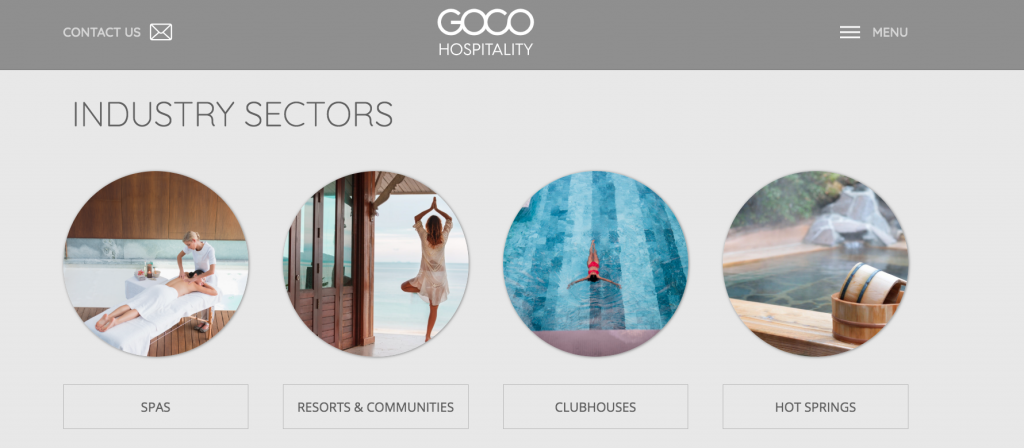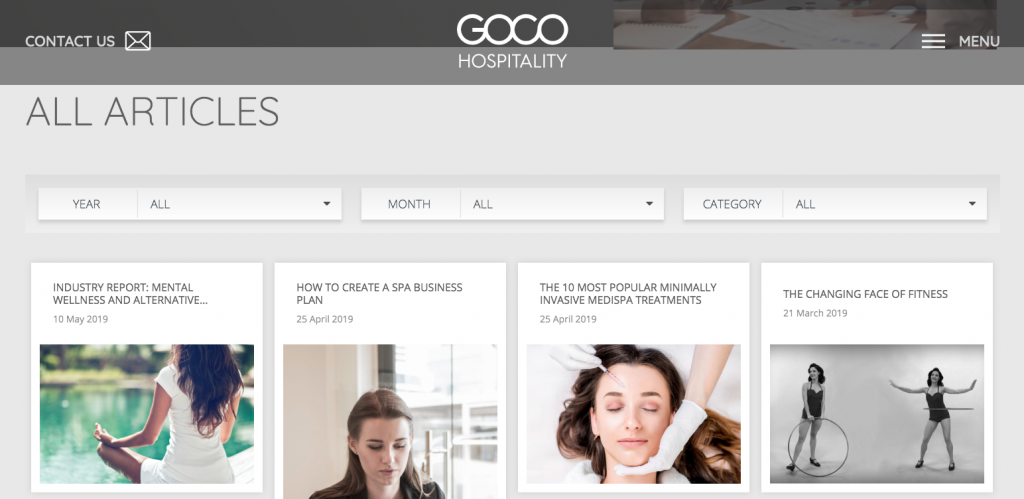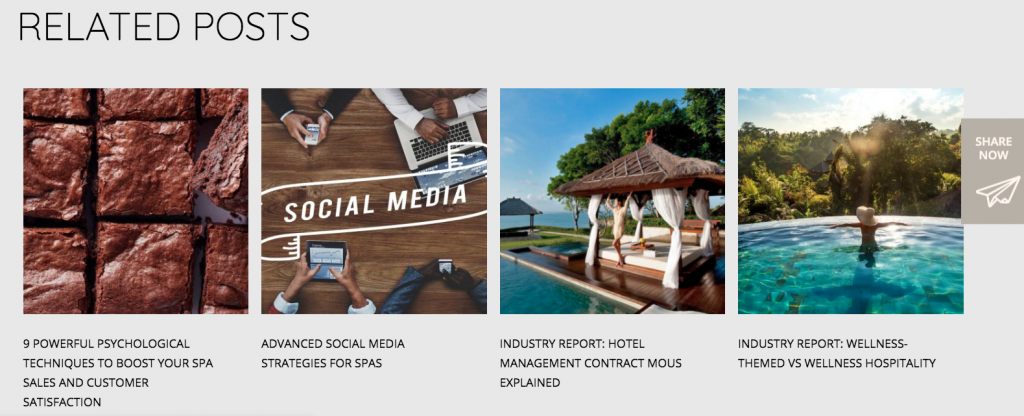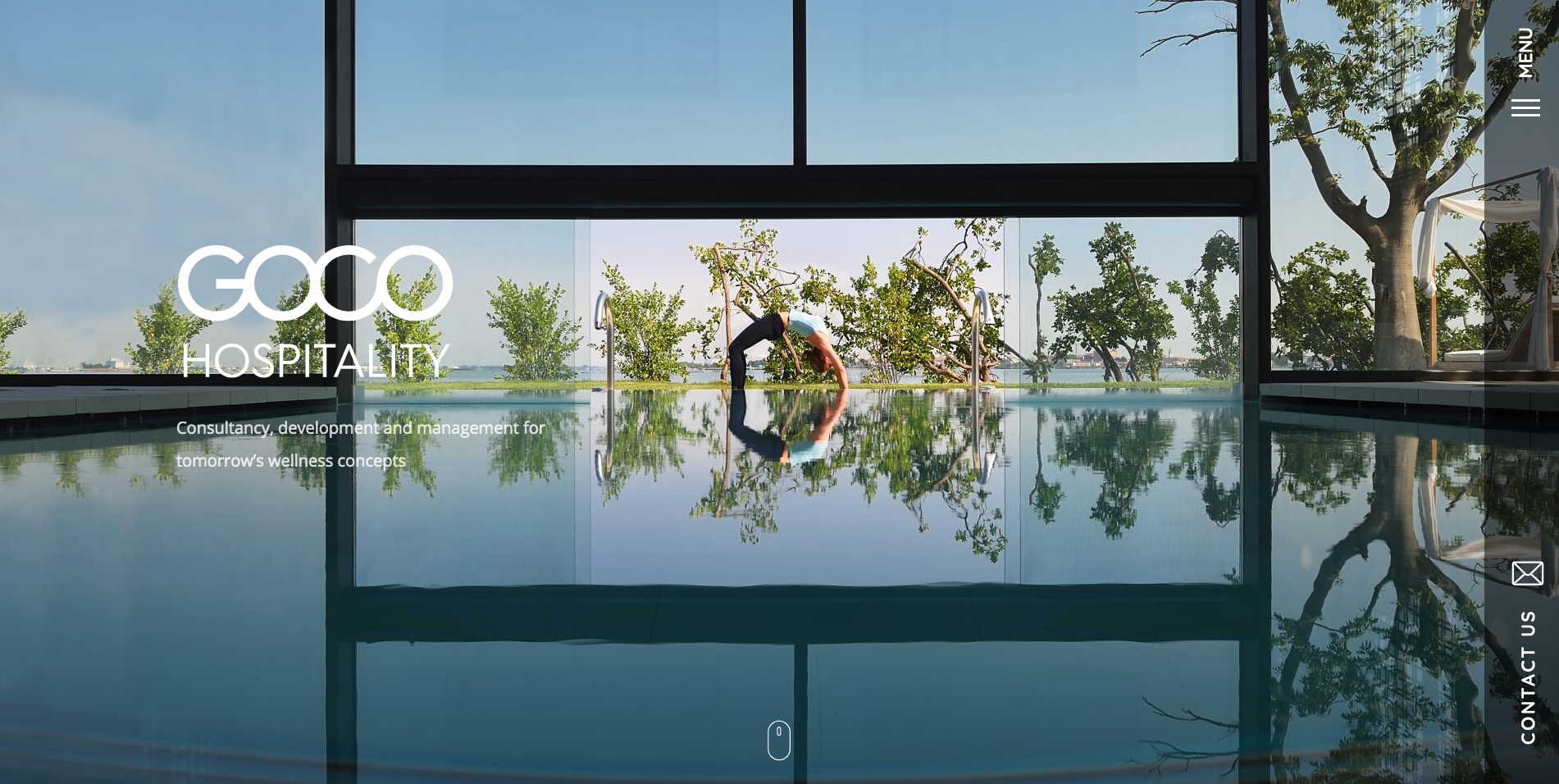
5 June 2019
Your website is like a salesperson that works 24 hours per day, 365 days per year. Therefore, it’s important to have one that works well. Explaining all the fine details of what we do at GOCO Hospitality can be a little complicated sometimes. Not everyone gets it straight away. Thus, we decided it was time to redesign our B2B website to make things clearer.
We turned to our friends at MultiVerse Advertising, who worked with us to produce this fancy new site that you’re on right now. We’ve focused on simplifying the user experience and made sure it’s a useful resource for those who want to know how we can support them with their wellness projects as well as to learn more about the current trends in wellness hospitality.

Firstly, we added details on the very good reasons why developers will want to include significant amounts of wellness in their hospitality projects in our Why Wellness? page. We also clearly highlight the industry sectors we specialise in. Each of our services is explained, our projects pages attractively show off our past work, and the Our Team page gives you details on the skills, qualifications and experience of our team members.
We also wanted to make our website more than just a brochure. We want it to also be a hub for learning about the most important wellness trends, gaining useful information on how to run spas and wellness properties more effectively and our company news. Therefore, we upgraded our old blog into our new Magazine section.

There’s much more to our new website. Do have a look around and please let us know any thoughts you might have. Just click that “Contact Us” button you can see in the top left-hand corner to send us a quick email.
To share some recent experience, here are our recommendations of what to think about when making a new website.
Tips for Creating a New Website:
1. Keep it Simple
People come to your website for specific reasons. You website needs to satisfy those demands as easily as possible. Make the design and layout simple so that people can find the information and carry out the task they want in as few steps as possible. Copywriting must also be straight to the point.
2. Don’t Have Dead Ends
As much as possible, your website user shouldn’t have to click the ‘back’ button. Always give your user a new place to move forward to. Blog posts should link to related blog posts, projects should link to other similar projects. Linking related sections of your website together is also good for search engine optimisation (SEO).

3. Think Carefully About SEO
Every website needs traffic. One of the most effective methods of generating long-term traffic is through people finding you though search engines such as Google, Bing and Yahoo. SEO is the way in which you help your website get found by people searching online. It’s highly complex, and if you want to be successful, it’s best to hire an SEO specialist. However, some basics to get right include:
- Understand what keyword phrases you are targeting.
- Make sure every page has a suitable title and description.
- Make use of header tags.
- Give images proper file names and alt text descriptions.
- Link related pages together.
- Create valuable content around the topics you wish to rank for.
4. Have a Clear Call to Action
You want your website user to take a specific action: contact you, subscribe, make a booking, purchase something, download a document, sign up for a free trial, share your content etc. Make sure you encourage them to take these actions.
5. Express Your Brand
A user should come away from a session of using your website with a clear understanding of your brand. Not just what your basic features are, but what is the personality of your brand. What makes you truly different from your competitors? This should be expressed through colours, patterns, images and videos, and writing style.




